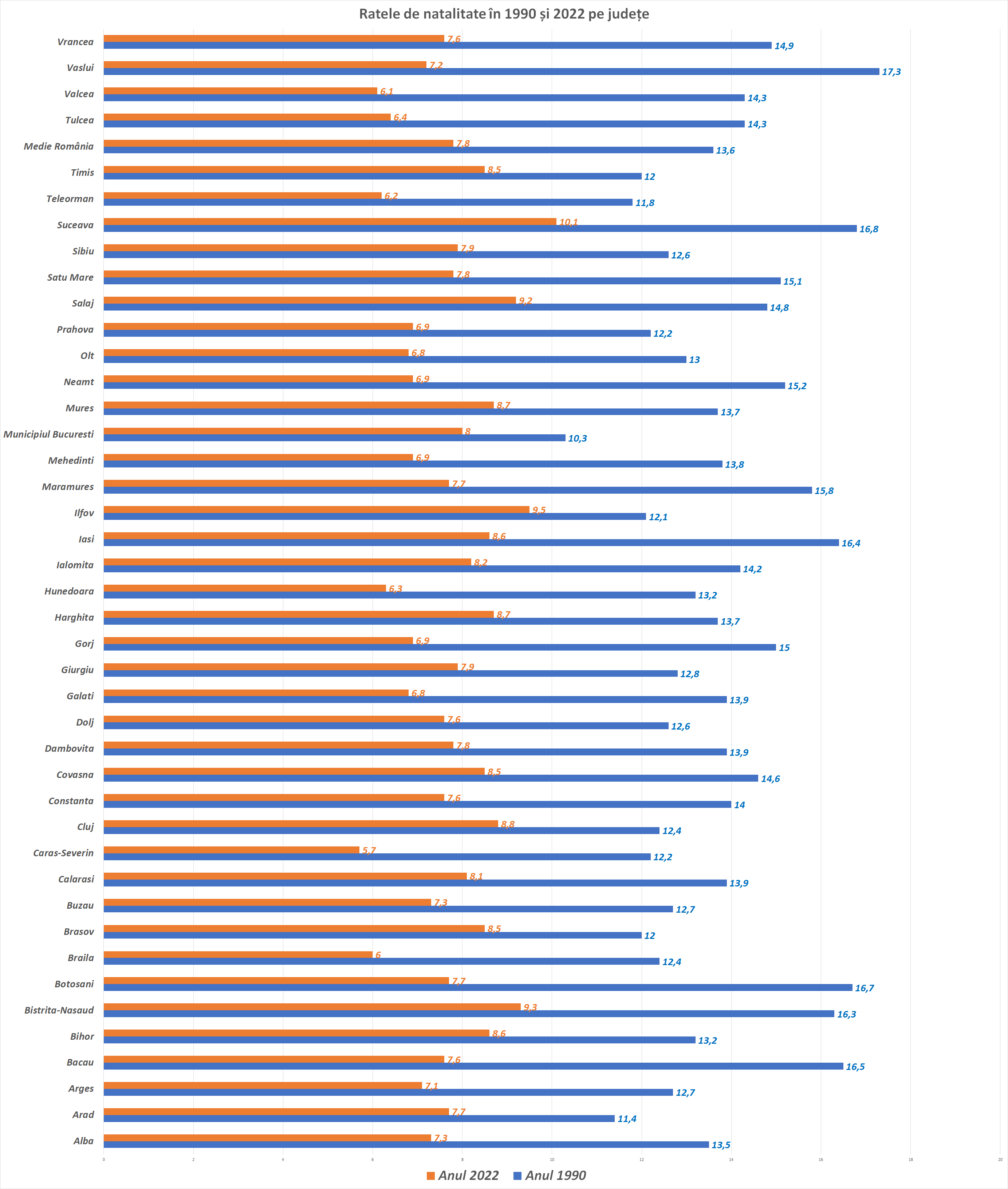
Halving the birth rate will have the most serious economic consequences. As the birth rate declines, so does the working-age population, which leads to a labor shortage, which, in turn, slows down economic growth. But this is not the worst news yet.
A lower birth rate also means fewer consumers, i.e. less demand, or less opportunity for economic growth (consumption has been the engine driving the economy for a long time in Romania).

A low birth rate means fewer workers. To fill these gaps, you either automate processes where possible or bring in workers from abroad, with all the cultural and structural changes that come with that.
A lower birth rate also means an older population: A lower birth rate, along with increased life expectancy, also means that the average age of a country’s population continues to rise. If the older population cannot be economically productive, they will become a vulnerable layer and a burden on the pension system.
From a budget perspective, a lower birthrate means fewer taxpayers to collect taxes from (or more money needed for the pension system). Raising taxes and levies will be needed to balance budgets.
Also from a financial point of view, the fact that fewer young people will have to support more and more elderly people (ie we will have a high dependency ratio) will put pressure on savings and investment. (in the sense of shortening them).
In summary, low birth rates can have significant effects on the economy, including labor shortages, fewer consumers, lower government income tax collections, slower economic growth, challenges for governments and welfare systems, and capital accumulation.
Source: Hot News
Lori Barajas is an accomplished journalist, known for her insightful and thought-provoking writing on economy. She currently works as a writer at 247 news reel. With a passion for understanding the economy, Lori’s writing delves deep into the financial issues that matter most, providing readers with a unique perspective on current events.